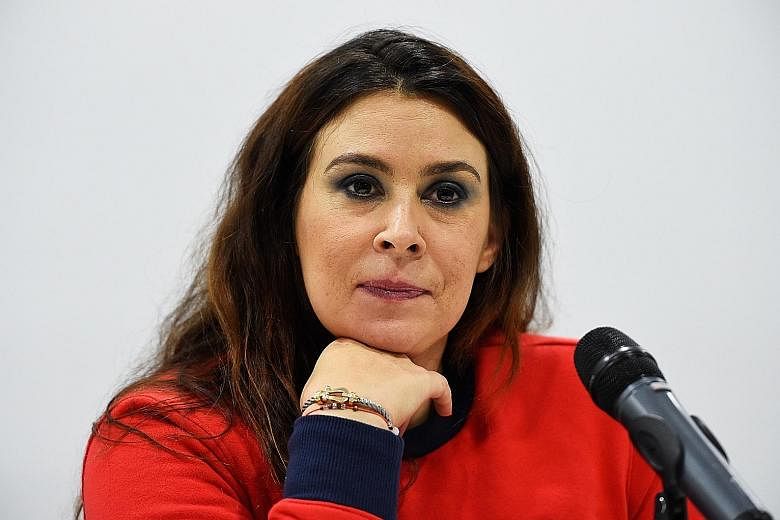NEW YORK • The 2013 Wimbledon champion Marion Bartoli endured mental abuse and physical illness over the past two years that, she said, left her close to death.
Dramatic weight loss fuelled speculation about her health and left little promise of a return to anything resembling professional tennis. Yet somehow she is back, partly because she fixed a far less sensational problem - her serve.
A shoulder impingement and a torn tendon forced her to retire just weeks after she won Wimbledon.
Now the 32-year-old has a new, more conventional serve.
"I don't know if you can call it conventional," Frenchwoman Bartoli said with a laugh. "I don't know if I do anything conventional."
Indeed, in 14 years on the professional tennis tour, she was not known for conformity. In addition to that odd serve, she had a rare, two-handed forehand and relied on a series of unusual training methods that involved elastic ropes tied from torso to limbs.
Her latest unconventional move is a comeback after 41/2 years of a retirement that was at times agonising and frightening. Her return will begin at today's Tie Break Tens, a one-day exhibition tournament at Madison Square Garden, where she will join Serena Williams - her first-round opponent, Venus Williams and five other players.
Bartoli also hopes to play at the Miami Open later this month, then a tournament in Monterrey, Mexico, and perhaps a dozen or so more this year, including the three remaining Grand Slam events.
She is not the first former Grand Slam champion to attempt a comeback. Kim Clijsters made a triumphant return after a nearly two-year layoff, winning the US Open in 2009. Justine Henin made a brief comeback after a 20-month absence. But Bartoli's retirement lasted much longer and included harrowing months of poor health.
"I've been weighing, at some point, 90 pounds (40.8kg), and I was close to dying," she said recently from Paris.
"So anything that comes after that is a bonus. If I am able to call myself a professional tennis player after that, it's a huge victory."
During her best years, she was consistently in the top 10, ascending as high as No. 7. She was a powerful player who dictated points with an aggressive style that mitigated her relative lack of court coverage.
It was a successful formula, but eventually her right shoulder became so inflamed that she could not play more than 45 minutes without searing pain, she said.
Five weeks after her greatest triumph at Wimbledon, she stepped aside. But what followed in retirement was much worse.
Bartoli described an 18-month period in which a boyfriend tormented her into dropping unhealthy amounts of weight, beginning in the autumn of 2015.
According to her, the man, whom she did not name, pressured her into a diet that she knew was unhealthy. He would point to slim women and mention how they looked better than her. She said her weight plummeted from 165 pounds (74.8kg) to 114 (51.7kg).
Perhaps weakened by that ordeal, Bartoli said, she contracted a virus from a mosquito while travelling in India - a version of the H1N1, also known as swine flu.
She said she had a fever of 40 deg C for 15 straight days and dropped to 90 pounds (40.8kg).
During those months, she worked as a television broadcaster at tennis events, and conducted on-court interviews at the French Open in Paris. People were so taken aback by her weight loss that some speculated she had anorexia, which bothered her because it was untrue.
The turning point came in 2016 at Wimbledon, where Bartoli hoped to play in an exhibition doubles event. But tournament doctors, fearing for her health, refused to allow her to play. It was then that she revealed she had contracted the virus and said she would soon be entering a clinic.
"Looking back, I think they took the best decision for me because I would have probably died on that court if I played a tennis match on that weight," she said. "It took me a very long period of time to recover, definitely. I went into the hospital for four months after that."
As she gradually recovered, she started to consider playing tennis again. Last October, she assembled a team and began to train.
When she returns today, at least one thing will look the same: the two-handed forehand that has defined her game.
"That hasn't changed, and I don't think it will ever change," she said.
NYTIMES

